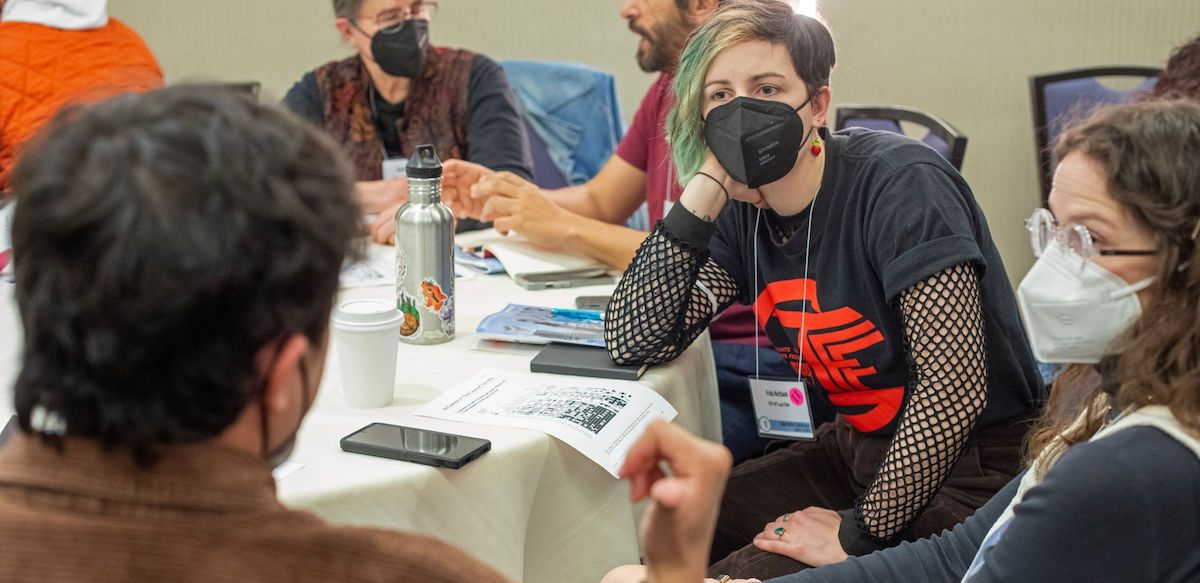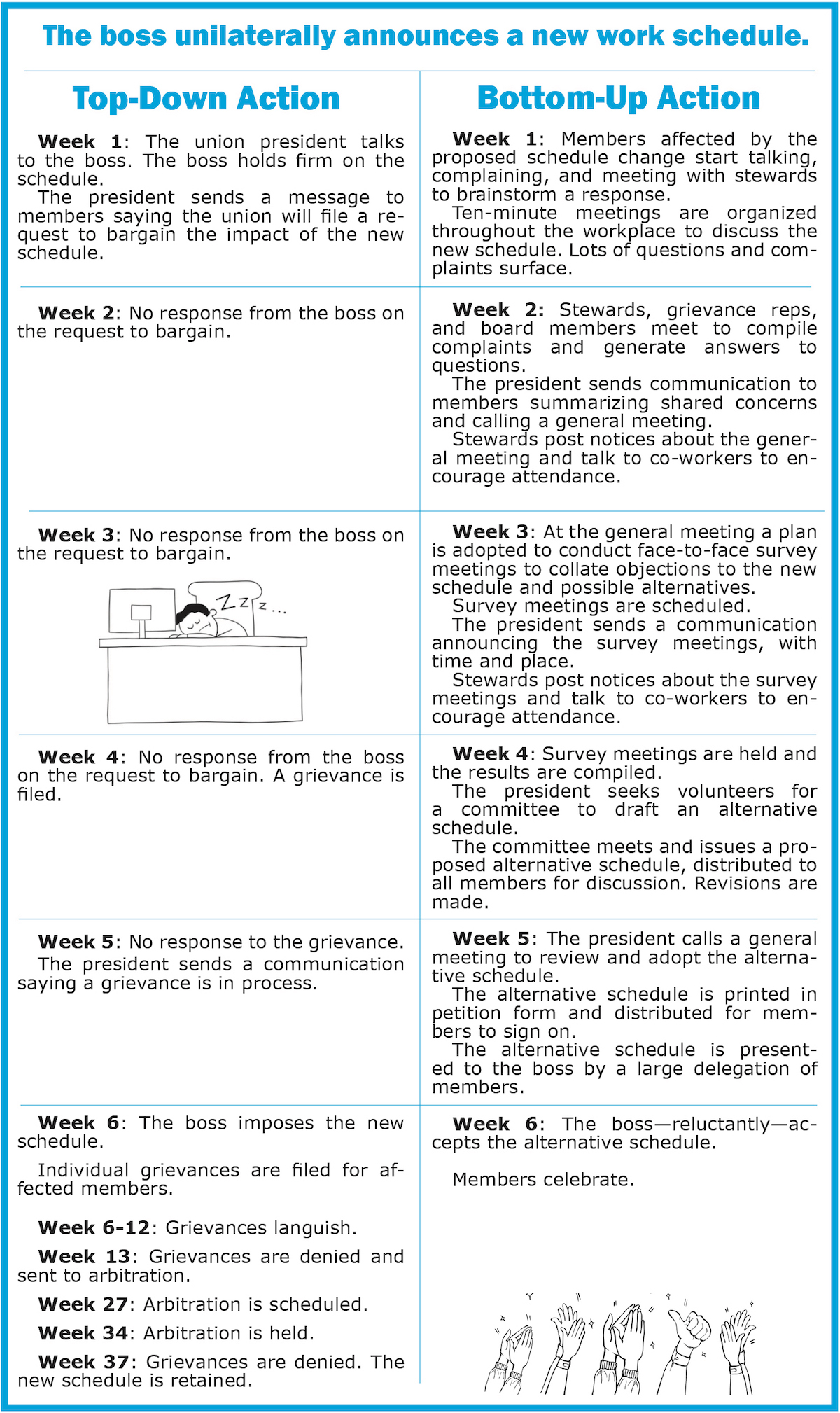Steward’s Corner: Taking Bottom-Up Action Changes the Balance of Power

Involving many co-workers to develop a comprehensive demand makes it hard for management to ignore or refuse. Photo: Jim West, jimwestphoto.com
Consider two different ways a union can take action to solve problems. A top-down approach may solve the immediate workplace problem, but it may not change the balance of power. Engaging as many members as possible in a bottom-up approach may accomplish both goals.
For example, consider the case at right where a boss unilaterally announces an unpopular new schedule, and how things might play out depending which approach you take, top-down vs. bottom-up.
In the first week, the approach on the left might appear more forceful—immediate action is taken! But a request to bargain is an action that the boss knows how to ignore. The longer it drags on, the more disaffected the members become.
By taking their time and talking among themselves in a well-organized way, the members of the union on the right side of the graphic below not only involve many co-workers and develop a comprehensive demand, but also make their demand very difficult for the boss to ignore or refuse.

Ellen David Friedman is a retired organizer for Vermont NEA and a member of the Labor Notes board. This article is excerpted from a new book she is writing about organizing.
